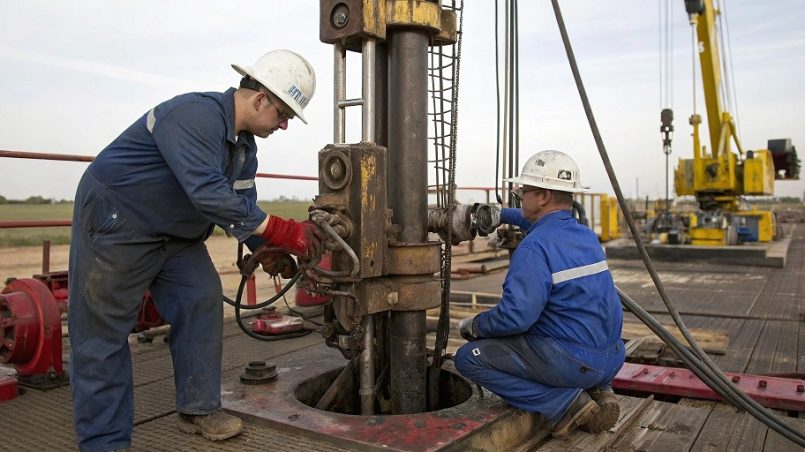Why Well Longevity Matters in Today’s Energy Landscape
The energy sector is facing new pressures as operators confront mounting environmental expectations, fluctuating commodity prices, and the need for optimized return on investment (ROI) on each well drilled. With global demand for oil and natural gas still robust, producers are encouraged to maximize existing resources rather than explore new sites. A well’s longevity has become a balancing act between industry profitability and environmental responsibility, with every extra year of life translating into reduced new capital expenditure and smaller ecological footprints. Casing inspection is one of the industry’s most effective strategies for pushing wells past initial projections, helping extraction operations flourish in highly competitive markets. By closely monitoring casing health, operators can reduce the risk of unplanned failures that could threaten both financial returns and compliance records.
Research by industry groups and field case studies consistently shows that wells benefitting from planned, proactive maintenance and evaluation are far less likely to encounter damaging downtime or forced abandonment. In fact, analysis of operational data reveals that regular inspection-based management can cut unscheduled losses by up to 40%. This means that for well owners and operators, the path to sustainable profits runs directly through a mindset of maintenance and careful observation. Not only does this approach make sense economically, but it also aligns with public and governmental calls for responsibility throughout a well’s life cycle.
The Basics of Casing Inspection: What Is It?
Well casings are essential for isolating underground fluids, withstanding high formation pressures, and ensuring boreholes remain intact as complex underground structures evolve. These concentric steel tubes are exposed to a harsh blend of chemical, mechanical, and thermal challenges that incrementally erode their strength over the years. The process of casing inspection focuses on identifying early-stage threats—such as corrosion, mechanical deformation, microscopic cracks, and others—that could spiral into expensive or dangerous failures.
- Electromagnetic Tools: These tools transmit electromagnetic signals throughout the casing to map thickness variations, which can signal internal or external corrosion that isn’t visible to the naked eye.
- Ultrasonic Testing: By sending high-frequency sound waves through the casing wall, ultrasonic inspection can detect subtle defects, such as pitting, cracks, or thinning metal, before surface symptoms appear.
- Caliper Logging: This involves passing a flexible probe through the well to detect variations in diameter, which may indicate deformation, mineral deposition, or impact from downhole operations.
Leveraging these evaluation methods regularly enables teams to take action before minor flaws develop into breaches. Early detection reduces the overall cost of repairs and maintains safety, productivity, and environmental shielding provided by the well’s steel framework.
Detecting Corrosion and Wear Before They Become Problems
Corrosion remains a relentless threat, often quietly undermining casing strength in areas exposed to water, acidic or saline fluids, and varying temperatures. Left unchecked, corrosion can compromise wellbore isolation, leading to leaks that might impact groundwater or cause lost production. The discipline of timely casing inspection provides operators with a map of affected zones before these hazards reach a critical stage.
Actionable data from periodic reviews enables maintenance teams to schedule cost-effective, targeted repairs during routine downtime, thereby avoiding the shock and expense of sudden, unplanned interventions. According to recent updates from the U.S. Department of Energy, successful corrosion prevention anchored by regular inspection programs has prevented millions of dollars in remediation costs across the sector. These savings arise not just from avoiding well failure but also from sidestepping regulatory penalties and preserving neighboring ecosystems from unexpected contamination.
Modern Inspection Technologies: Staying Ahead Of The Curve
- High-Resolution Imaging: Advances in wireline logging bring sharply detailed visualizations, detecting micro-cracks and thin-wall corrosion before traditional methods notice any issues. This leap in insight grants engineering teams a predictive edge.
- Real-Time Data Analysis: By allowing crews to receive immediate readings, real-time monitoring streamlines both diagnosis and execution. This empowers teams to address minor anomalies before they multiply, increasing operational stability.
- Predictive Analytics and AI: By integrating machine learning and robust data sets, operators can forecast casing behavior and tailor inspection intervals, significantly reducing the likelihood of mid-life surprises and optimizing maintenance expenditures.
In several global case studies, deploying next-generation logging tools directly improved asset management, helping to delay abandonment or even extend the productive life of aging wells. These tools are essential components for any operator seeking to extend the operational horizon of current assets.
Step-by-Step: How Regular Casing Inspection Boosts Well Health
- Establish a Baseline: It starts before production ramps up, with a thorough inspection of new casings to catch manufacturing defects or construction issues. This establishes a critical benchmark for future comparisons and facilitates precise problem-solving later in the well’s life.
- Schedule Routine Checks: Define inspection timelines based on well maturity, previous inspection results, and production intensity. High-usage or older wells often need more frequent reviews to ensure any degradation is caught promptly.
- Analyze Data: Experienced engineers scrutinize every dataset, comparing it to the original baseline and looking for early corrosion, thinning, or new forms of deterioration. Today’s digital systems can also highlight trends invisible to the human eye.
- Plan Maintenance: By pairing inspection data with planned maintenance dates or lower-risk production windows, repairs can be performed proactively, keeping production rolling as much as possible while maintaining structural reliability.
This stepwise regimen creates a closed feedback loop, where the well’s history directly shapes its future, reducing uncertainty and improving asset value.
Cost Benefits: Saving Money by Preventing Major Failures
- Casing breaches are among the fastest ways to incur unexpected costs, whether through the loss of valuable fluids, blowouts, or the need for emergency well work.
- Investing in minor, routine repairs following each inspection is typically only a small fraction of the cost compared to a catastrophic well event, which can run into the millions by the time cleanup, lost production, environmental fines, and equipment replacement are added up.
- Many insurance providers now reward operators with consistent inspection programs by reducing premiums, a nod to decreased operational risk.
A culture of continuous improvement means that each inspection becomes a profit-protection milestone, not just a regulatory task.
Environmental Safety and Compliance
Casing inspections play a direct role in maintaining high standards for environmental protection. Failing casings can permit the migration of oil, gas, or produced water into freshwater aquifers or even to the earth’s surface. Not only are these scenarios costly and dangerous—they can also severely damage an operator’s reputation, jeopardizing contracts and future access to drilling sites.
With greater regulatory scrutiny and stricter compliance guidelines in place, systematic casing inspection is a straightforward way to generate proof that wells are operated in a safe and environmentally responsible manner. This proactive stance benefits everyone—from the operator to local communities to the broader environment—reinforcing shared values of safety and stewardship that are increasingly demanded in today’s energy economy.
Final Thoughts: Building a Culture of Prevention in the Oilfield
Extending the productive life and ensuring the safety of oil and gas wells is best achieved through a combination of modern technology, procedural discipline, and a culture of vigilance. Implementing a forward-thinking casing inspection program positions operators to seize every opportunity for improved efficiency, reduced risk, and responsible stewardship.
Ultimately, the practice of thorough, scheduled casing inspection is a testament to the value of prevention. Teams that continually scrutinize and nurture their most critical assets ensure not only their competitive edge but also future-proof the industry against shifting regulatory and market demands.



